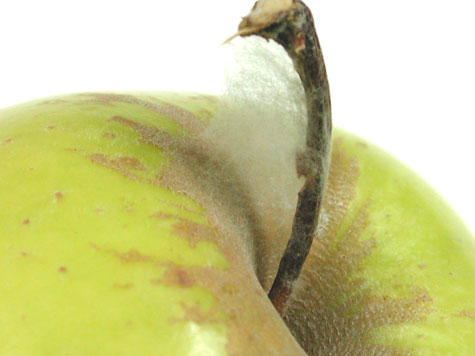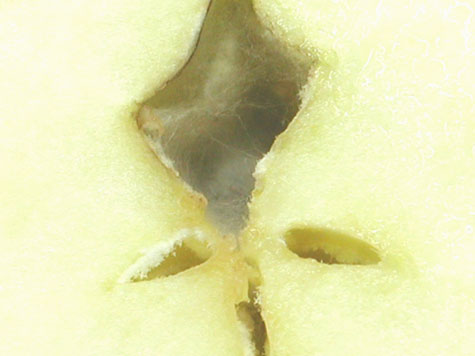As I roamed the produce aisles of our local grocery store yesterday I saw displays of new crop apples. You may still be receiving some varieties of last year’s crop, as the growers begin to clean out their controlled atmosphere storage rooms. With the storage apples you may encounter a few apples with moldy stems, and wonder if this is a defect to be worried about.

For the most part the mold will dissipate when the apples are taken from the carton and set out on display. No mater the amount of mold present on the stem, the moldy stem is not considered a defect of any of the U.S. Apple Grades, including the top grade, U.S. Extra Fancy. If you find mold affecting the calyx (the bottom of the apple) the same rules apply, “it is not a defect.” The USDA Inspection Instructions do state if the mold affects the flesh of the apple then the apple would be considered a defect. Chances are the affected flesh would be soft, maybe mushy, which would mean the apple would be scored against the 1% tolerance for decay.
But this doesn’t mean you should totally ignore mold on the stems of apples. You will want to cut a few apples in half and determine the extent of the mold. You may notice the mold is not only present on the stem but it may also be present in the seed cavity.

If you do find mold in the seed cavity this is not to be ignored, as this is a defect of the U.S. Extra Fancy, U.S. Fancy and U.S. No. 1 Grades. If the surrounding flesh is still firm, the moldy seed cavity would be scored against the 10% tolerance for defects. If the surrounding flesh is soft, or mushy, the defect would be scored as decay, against the 1% tolerance.

5 Comments on “Apples-Moldy Stems”
hi it is bad
Could u still eat around it tho?
Please tell me what are the causes of Moldy stem after storage.
Niyaz….thanks for the question. The stem cavity is a area on the apple where moisture is allowed to collect, even in small amounts, as compared to the smooth surface of the skin. The mold spores accumulate and grow in the stem cavity and develop into strands of hyphae reaching upwards along the stem.
Hi,
This was a very helpful article. Thank you!